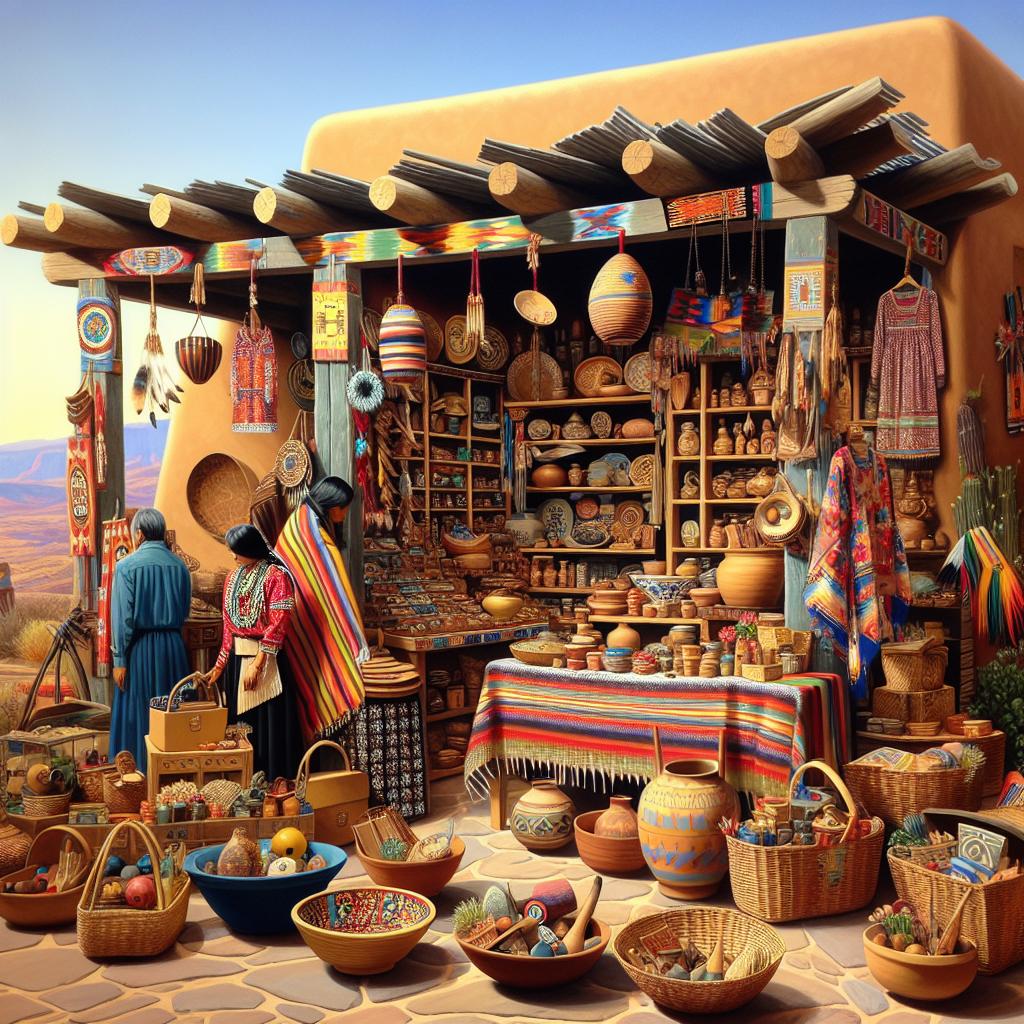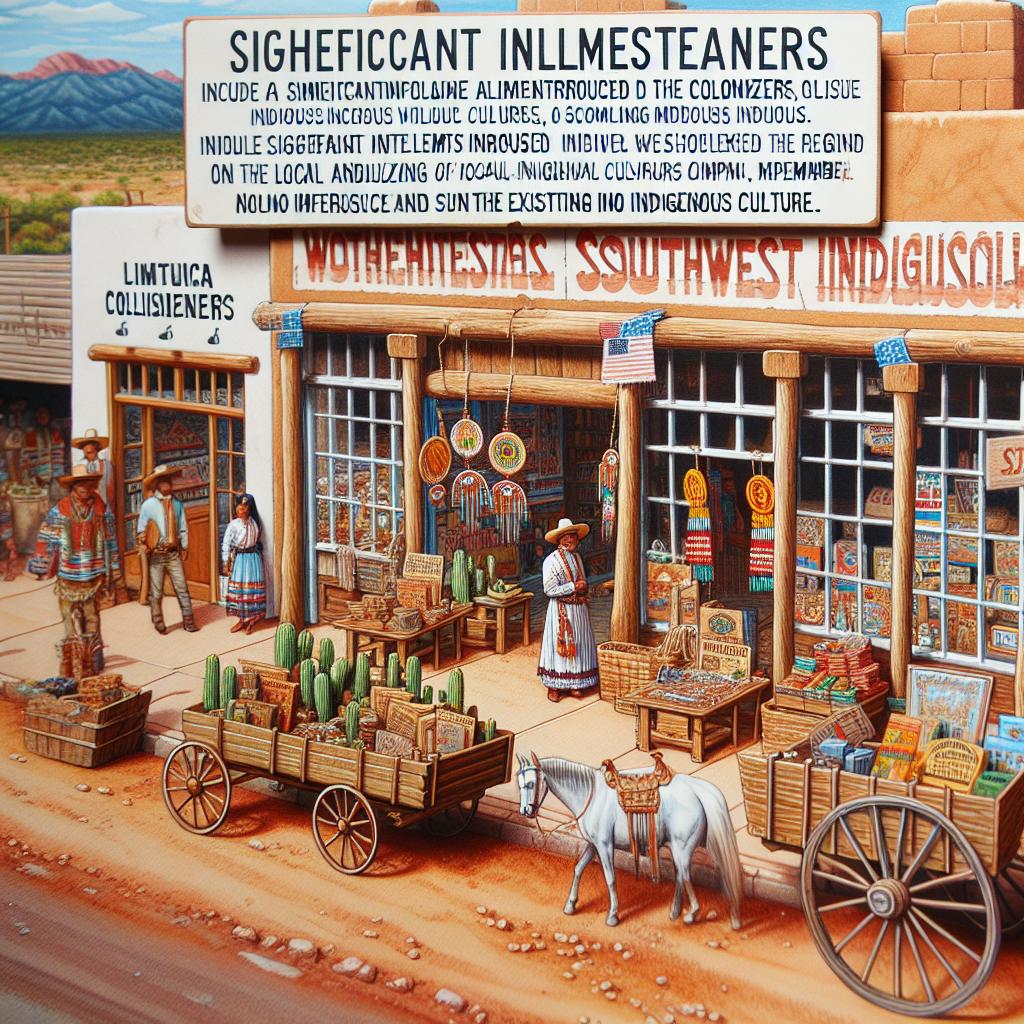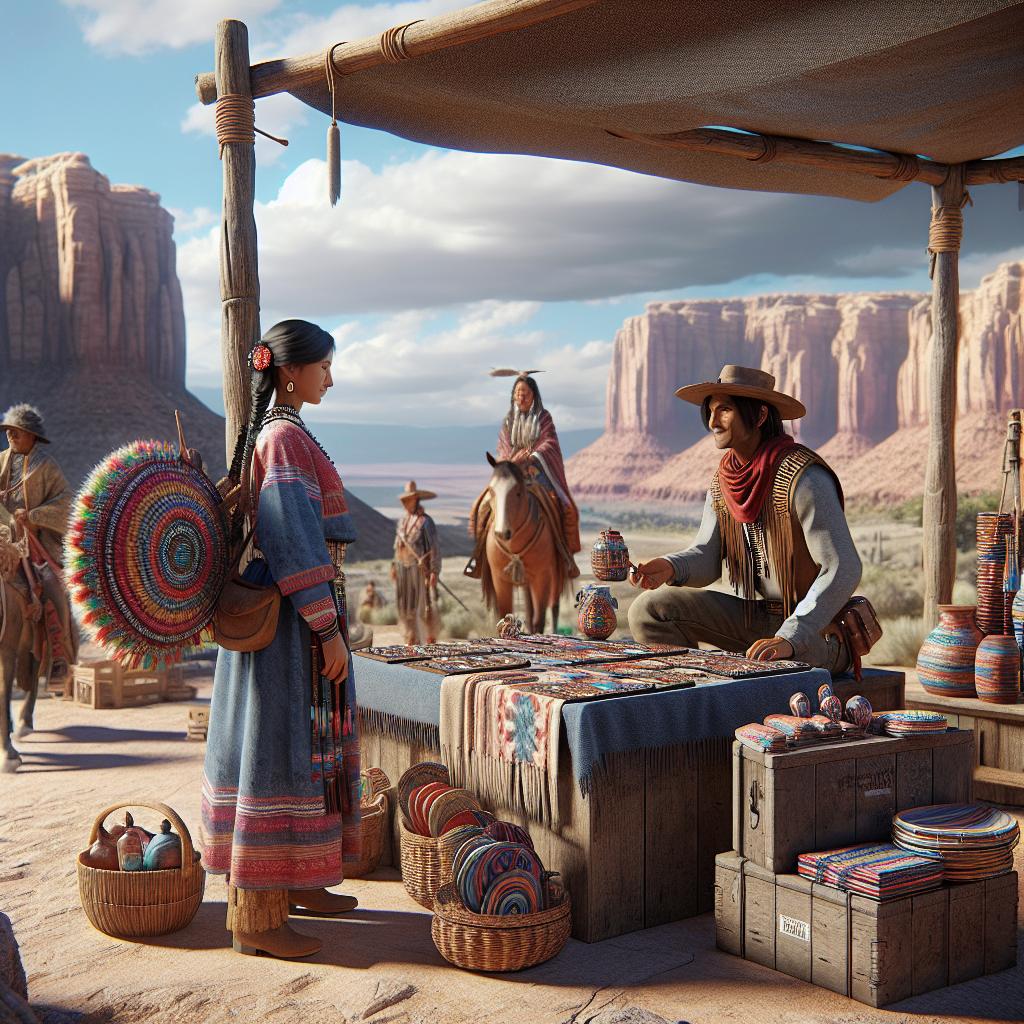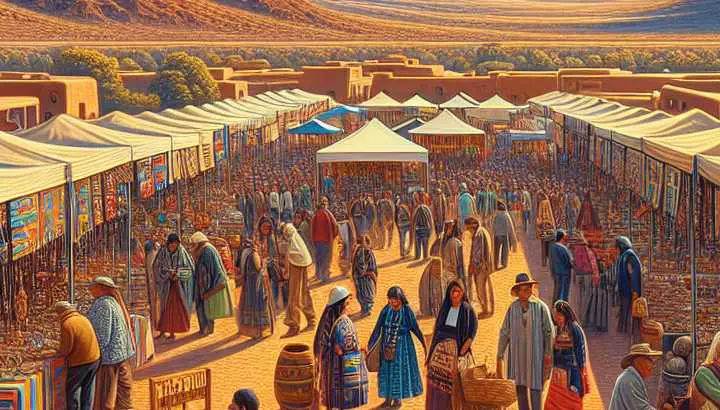Indigenous Communities of the Southwest

1. Traditional practices and cultural heritage of Southwest Indigenous communities
Title: The Rich Tapestry of Southwest Indigenous Cultures: A Fundrive down History Lane
Once upon a time, where modern America stretches its towering skyscrapers and buzzing freeways, there existed ancient communities whose cultural prowess conferred a unique zest to the land we now call the Southwest. If we could borrow Marty McFly’s DeLorean for a swift time-jump, we would be welcomed by the breathtaking cultural wealth of these Southwest indigenous communities. Their captivating traditions and cultural heritage will make colonization look like Confucius in a modern Jazz club – a bit out of sync!
Peek into this world, and it’s like stepping into a vibrant cinematic color palette, complete with brightly hued pottery, magical dances, riveting rituals, and dramatic landscapes. The Pueblo, Apache, Navajo, Zuni, Hopi, and others were the maestros wheeling the baton of this orchestral culture. Their fascinating practices make them the Rembrandts, Mozarts and Shakespeares of their time.
A major component of this bustling indigenous theatre was agriculture. And no, we don’t mean the type with massive turbo tractors or drones. These communities were original green thumbs, they had Mother Earth on speed dial. The Hohokam, for example, aced in irrigation systems, effectively turning Arizona’s desert landscape into a prosperous garden fair – take that, modern-day technology! They skillfully harvested corn, beans, and squash, famously referred to as “the three sisters.” Cheeky, right? Each plant nurtured the other—a beautiful triad of sustainable agriculture.
In the domain of architecture, the Southwestern natives would give modern architects a run for their money. A closer look at the Pueblo people’s complex multi-storied structures, also known as ‘Pueblos’—that’s like naming your dog, ‘Dog,’ but hey, it works—would leave any urban dweller green-eyed. These Adobe condominiums perfectly blended into the scenery, proving that sustainability and style could indeed shake hands.
Their artistic expressiveness was no less riveting. The distinctive Hopi pottery, Navajo weaving, and Zuni jewelry are examples of indigenous genius at its best. Made from locally sourced materials, these items were not mere aesthetic statements but interconnected links unifying people, nature, and the spiritual realm.
“Unable to overcome the insurgents in honourable warfare, Captain-General Weyler inaugurated a system of butcheries that caused a shudder to run through all civilized communities when informed of his wanton waste of human life”
~ Frederick Albion Ober, Spain
And let’s not forget the grand Kachina dolls of the Hopi! Those meticulously crafted figures used for ritual purposes could arguably give any Barbie a run for her money in both charm and cultural significance.
An important chunk of their cultural tapestry was spiritedly woven into their dances and rituals. The Navajo’s `Yeibichai’ dance, the Apache ‘Rain dance’, or the Pueblo ‘Buffalo dance’—working majorly as appeal for divine intervention—are as much of awe-inspiring athletic events as jampacked spiritual experiences. Imagine the Olympics crossed with Burning Man – adrenaline mixed with a high dose of transcendence.
Preserving oral history was another refined practice. Storytelling and folk songs were passed down like an heirloom Rolex from generation to generation—minus the hefty insurance premium, of course. These served as their historical textbooks, lullabies, and TED Talks, imparting wisdom, values, and a sense of identity.
Thus, the rich cultural heritage and traditional practices of Southwest Indigenous communities offer a rich palette of colors that beautifully color the canvas of human history. Their relentless chorus still echoes in the canyons and deserts of the ubiquitous Southwest, serving as a constant reminder that while times may change, the pulsating beat of cultural heritage continues to rhythmically thump in the heart of humanity.
So, the next time you consider time-travel, forget ancient Rome or Greece, set the destination to the indigenous Southwest. Here’s to preserving these unwritten sagas in more ways than one, fostering respectful acknowledgment, education, and an appreciation that’s as wide as the Grand Canyon itself. Now, where did we park that DeLorean?
Learn More Here: 1. Traditional Practices And Cultural Heritage Of Southwest Indigenous Communities

2. Impact of colonization on Southwest Indigenous communities
If there were ever an episode for Parks and Rec for history nerds (yes, they exist, and no, they don’t all wear glasses and tweed jackets), it would undoubtedly be titled: “The Impact of Colonization on Southwest Indigenous Communities: A Whirlwind of Change, but Definitely Not Your Average Reality Show.”
Picture this: a pristine landscape painted in hues of rich oranges and deep reds, dotted with fascinating rock formations and expansive desert plains. A peaceful, self-sustaining indigenous tribe, living harmoniously with nature, silently echoes stories of a rich cultural heritage, long-standing community cohesion, and spiritual allegiance. Flash forward several centuries, and cue the not-so-welcome European explorers, on the proverbial hunt for the New World, armed with lofty ideals of civilization, manifest destiny, and fever dreams of gold, ready to perform a socially unsanctioned home makeover on the local indigenous communities.
The Southwest Indigenous communities — consider them the unwitting contestants on an unwelcome episode of “Extreme Makeover: Colonial Edition.” Their lives, cultures, and ecosystems were forcibly revamped with the arrival of the bubble-busting Europeans — think of them as the Simon Cowell of the colonization period. And not even the kinder, softer 2020’s Simon Cowell.
Through the lens of history, imagine those rosy-cheeked Europeans stepping foot on the Southwest soil, receiving no red carpet welcome, no glamour, and definitely no Hollywood Walk of Fame stars. Just a raw, rugged terrain filled with communities who had survived and thrived entirely differently from their European counterparts. The Spanish, with their finely curled mustaches quivering indignantly, quickly realized the indigenous communities didn’t share their European sophistication, and there began their unsolicited repurposing of these ancient tribes.
The Europeans, with a toolbox containing a mixed bag of disease, religion, weapons, and the constant yammering about gold, went on to dismantle centuries of sustainable living and unique cultural practices, faster than you can say colonization. Sadly, it was a rerun, not a season premiere, as much of the same had happened to indigenous communities worldwide.
Chiefly among the changes was the forced religious conversion – a charming characteristic of colonizers – but not exactly a crowd-pleaser. Native religious practices were deemed “savage and ungodly” by the Europeans, who promptly began Catholic evangelization in the Southwest. It’s like being told that your favorite dish, a cherished family recipe, is disgusting, and instead, you should learn to love boiled vegetables because they’re ‘civilized’. Talk about a cultural heartburn!
The introduction of new farming technologies swung another double-edged sword. Our heroes were introduced to nonnative crops such as wheat, barley, and, essentially, the superhero of the food world: onions.
“”Now this was somewhat late, for the colonization of this island had begun some five or six and twenty years before, and there had come out great numbers of Norwegian chiefs, who fled from the rapacity and the vengeance of King Harald Fairhair, who outlawed every man who took up arms against him.””
~ Unknown, Unknown
The local agriculture was forced to adapt, altering ecosystems and economies like an uncontrolled reality show with unpredictable plot twists.
The Spanish also introduced new animals to the region. Picture the surprise of locals as they first laid eyes on horses, cattle, sheep, goats, and pigs. It would be akin to waking up one morning, stepping into your backyard, and finding a giraffe munching on your apple tree. Imagine that in the place of your lovely plant collection, you now have barn animals. Seriously, where’s the warning label?
Despite the colonial period seemingly being all cut and dry with European notions of civilization and displacement, the Indigenous tribes of the Southwest found their footing amid the chaos. They managed to meld their traditions with the Eurocentric concepts, engendering a unique hybrid culture, an ongoing blend of the old and the new that persists to this day — a testament to resilience and adaptability.
The moral of this satirical rendition of history? When life throws you Euro-induced curveballs, incorporate them into your cultural fastball and create a whole new game. While the initial impact of colonization on Southwest indigenous communities was devastating, they adapted, survived, and maintained much of their cultures, leaving us with a rich, mixed heritage to learn from and appreciate. And that’s the tea — steeped in the flavors of tragedy, resilience, and survival. Forget reality TV, Netflix, you need to start delving into history!
Like This? Try: 2. Impact Of Colonization On Southwest Indigenous Communities

3. Environmental stewardship in Southwest Indigenous cultures
Title: Three Lustful Whispers: Environmental Stewardship from the Dynamic Southwest Indigenous Cultures.
CRACK! A walnut shell splits open, plopped onto your romantic candlelight dinner like an unwanted in-law. Cracking walnuts with your bare hands may not be the epitome of your date night. But, if you were to spend a day in the life of a Hopi, an Indigenous community in the Southwest, you’d learn that every aspect of nature has a purpose, even a pesky little thing like a walnut.
1. The Hopi: Walnuts, Water and Whispering Winds
Listen closely; you might hear the whisper of the winds through the cornfields if you’re visiting the Hopi. Animated by a profound reverence for Mother Earth, this tribe considers every rock, river, and raindrop as living beings. Before you gulp down your morning coffee, a Hopi would’ve given thanks to the waters, winds, and the cheeky spirits they playfully call Kachinas. Call it the Hopi iOS update, one that updates the spiritual software that maintains nature’s appeasement and balance.
Cracking walnuts is not merely an act of muscle flexing, but it involves an eco-intimate affair. Nurturing the walnut tree, observing its growth, then responsibly harvesting its fruit ensures respect for nature and sustains resources, a sweet nutty sustainability 101.
2. Diné (Navajo): The Earth-Walkers
Ever had too much Netflix and chill and wished for some Akashic perspective in life? Meet the Diné, more commonly known as the Navajo, who follow Hózhǫ́ǫ́gi, ‘The Navajo Beauty Way’. It’s not a Beverly Hills boutique, folks! It is an ancient philosophy that requires one to walk in harmony with mother nature, a fantastic upgrade from Amazon prime, to a prime understanding of the humbling profundity of our cosmos.
In midst of crackling fires and towering mesas, the Diné raise their sheep.
“Prague does not have the problems of Bucharest, Belgrade, and Warsaw, where peoples separated through centuries and impregnated with different cultures and radically divergent political ideals and political experience have been brought together under a new roof”
~ Herbert Adams Gibbons, Europe Since 1918
They’re not only a delicious dinner entree, but they also symbolize the tribe’s interconnectedness to the earth and their careful pastoral stewardship. With every clink of the loom, the humble Diné weaver binds culture, ecology, spirituality, and identity, like an intricate environmental tapestry.
3. The Apache: Respect, Not a One-Hit Wonder
Welcome to the Apache ways, where respect isn’t just an addictive Aretha Franklin beat but a way of life. Theirs is a world woven around sustainable hunting, fishing, and farming. Apaches treat hunting as a sacred dialogue between humans and animals based on reciprocal respect. So, if you decide to ferret out a fish for lunch from the Tonto Basin, be prepared to ask politely first, an Apache way.
We’re talking about a culture so in-tune with nature, where every caw, chirp, and chitter from the animal kingdom has a pulsing rhythm. The split walnut? It’s not a clumsy nuisance anymore – it’s a resounding symphony of sustainable survival.
Wrapping Up
Making every day Earth day remains the heart of these remarkable Southwest indigenous cultures. Their cultures encourage us to plant an ‘ecological acorn’ in our hearts, where Mother Earth isn’t a silent entity but an orchestra of natural wonders speaking to us.
So, the next time you crack a walnut, engage in a Netflix marathon, or plan a fishing trip, remember to dance to the sweet symphony of the Southwest tribes. A symphony that sings of respect, sustainability, balance, and a flirty whisper that whispers, ‘Nature loves to be respected, and it loves being courted with responsibility too.’
Like This? Try: 3. Environmental Stewardship In Southwest Indigenous Cultures
